Landscape Size

Table of Contents
Decoding Landscape Size: A Comprehensive Guide for Photographers and Designers
Understanding landscape size, or more accurately, aspect ratios, is crucial for photographers, graphic designers, and anyone working with visual media. This comprehensive guide will delve into the various landscape aspect ratios, their uses, and how to choose the right one for your project. We'll also explore the history and implications of different landscape orientations.
What is Landscape Orientation?
Landscape orientation refers to the arrangement of an image or page where the width is greater than the height. This is the opposite of portrait orientation, where the height is greater than the width. Think of it like holding a photograph horizontally – that's landscape. This orientation is often preferred for capturing wide scenes like landscapes (hence the name!), panoramic views, and group photos.
Common Landscape Aspect Ratios:
While "landscape" describes the orientation, the specific dimensions vary. Here are some of the most frequently used aspect ratios:
-
4:3 (1.33:1): A classic ratio, prevalent in older standard-definition televisions and some digital cameras. It offers a good balance between width and height.
-
16:9 (1.78:1): The dominant aspect ratio for widescreen high-definition television, movies, and many modern digital cameras. It provides a wider, more cinematic feel.
-
3:2 (1.5:1): A popular choice for professional photography, offering a good compromise between wide and tall. Many DSLR cameras use this ratio.
-
21:9 (2.33:1) or 21:10 (2.1:1): Ultra-wide aspect ratios offer an extremely expansive field of view, often seen in gaming monitors and some high-end cinema. These ratios are becoming increasingly popular for capturing dramatic landscapes and architectural photography.
-
1:1 (Square): While technically not a landscape aspect ratio, it's worth mentioning as a frequently used format, especially on social media platforms. It allows for balanced composition but isn't ideal for showcasing expansive scenery.
Choosing the Right Landscape Size for Your Project:
The optimal landscape size depends heavily on its intended use:
-
Photography: The choice often depends on your camera's sensor and personal preference. Consider the scene you're capturing – a wide panorama might benefit from 16:9 or even 21:9, while a tighter composition might suit 3:2 or 4:3.
-
Graphic Design: Consider the platform where your design will be viewed. Web banners often use 16:9 or custom sizes, while print designs might adhere to standard print sizes with specific aspect ratios.
-
Video Production: 16:9 is the industry standard for most video projects, ensuring compatibility with most playback devices and platforms. However, more cinematic projects might utilize 21:9.
-
Social Media: Each platform has its own recommended image sizes. Understanding these dimensions is crucial for optimal display and engagement. Experiment to see what works best for your audience.
The History and Evolution of Landscape Aspect Ratios:
The evolution of aspect ratios is tied to technological advancements in photography and video display. The transition from 4:3 to 16:9 was a significant shift towards a wider, more immersive viewing experience. The emergence of ultra-wide ratios like 21:9 signifies a continued pursuit of expanding the visual field.
Optimizing Your Images for Web and Print:
Regardless of the chosen landscape size, optimizing your images is crucial for both web and print. This involves:
-
Resolution: Ensure your images have a high enough resolution for their intended use to avoid pixelation.
-
File Size: Optimize file size without sacrificing quality to improve loading times (for web) and printing efficiency.
-
Color Profile: Choose the appropriate color profile (e.g., sRGB for web, Adobe RGB for print).
By understanding the nuances of landscape size and aspect ratios, you can create visually appealing and effective content, whether for photography, graphic design, or video production. Remember to always consider the intended platform and audience when making your decision.

Thank you for visiting our website wich cover about Landscape Size. We hope the information provided has been useful to you. Feel free to contact us if you have any questions or need further assistance. See you next time and dont miss to bookmark.
Featured Posts
-
Farmers Furniture Moulton Al
Jan 25, 2025
-
Concept Ii Closets
Jan 25, 2025
-
Dining Room Pub Chairs
Jan 25, 2025
-
42 Inches White Ceiling Fan With Light
Jan 25, 2025
-
Electric Infrared Fireplace Insert
Jan 25, 2025